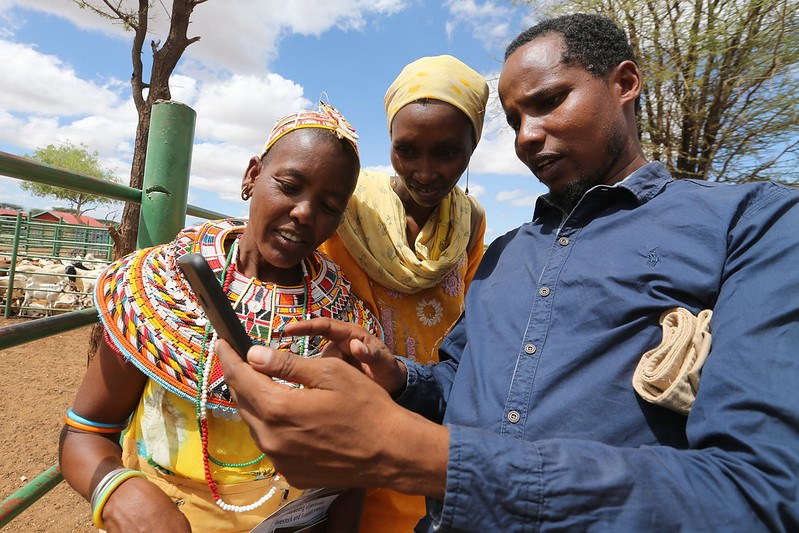The widespread usage of digital technology in sub-Saharan Africa (SSA) is an essential phenomenon that fosters productivity in the digital economy and integrates markets in the region.
In the last quarter of 2018, SSA was home to 456 million unique mobile subscribers – representing an increase of 20 million subscribers over the previous year. Projections from the GSMA Intelligence report for 2019 suggest that by 2025, there will be more than 600 million mobile subscribers in the region, thus about 50% of the total population in SSA will be connected.
With a Compound Annual Growth Rate (CAGR) of 4.6% and an additional 167 million mobile subscribers from now to 2025, SSA continues to be the fastest growing region in the world. The hotspots for the fastest growth levels from the period to 2025 will be in Nigeria and Ethiopia - accounting for growth rates of 19% and 11%, respectively.
The total number of smartphone connections in SSA had also increased to 302 million in 2018 with smartphone connections in the area expected to reach 700 million by 2025 – this will represent smartphone adoption rate of 66%.
The effective usage of digital technology improves productivity and stimulates economic growth in SSA – in 2018, the use of mobile technologies and services generated an economic value of US$144 billion, accounting for 8.6% of SSA’s Gross Domestic Product (GDP).
The mobile ecosystem played a pivotal role by supporting close to 3.5 million jobs directly and indirectly – in all, US$15.6 billion was raised via taxes which proved to be a major financial resource for funding the public sector. According to GSMA Intelligence, by 2023, mobile technologies and services will account for 9.1% of GDP, thus about US$185 billion.
Through mobile money services, the unbanked and underserved population in SSA are now accessing financial services – with 45.6% of the world’s entire registered mobile money accounts operating in the area, SSA is the epicentre of mobile money services as the value for mobile money transactions exceeded US$25 billion in December 2018, accounting for 65.7% of global mobile money transactions.
There were also 396 million registered accounts with an activity rate of 37% by the last quarter of 2018. The role of mobile money agents has been indispensable in enhancing financial inclusion – whiles branches of banks and ATMs operating with a low density network of 1 branch per 1000 km2 and 2 ATMs per 1000 km2, respectively, mobile money agents on the other hand, have a high density network of 60 agent outlets per 1000 km2.
As mobile phone penetration continues to soar in SSA, the adoption of mobile money services also increases – the findings of a survey conducted by the Pew Research Center, in six countries in SSA reveals that a large percentage of the population own mobile phones with basic phones such as flip phones or feature phones being the most used communication device.
The findings of the survey also indicates that apart from South Africa, where nine out of every ten adults own a mobile phone and 51% of the country’s population own smartphones that can access apps and the internet, the dynamics for mobile phone usage is quite different in Ghana, Kenya, Nigeria and Senegal where only one-third of adults own a smartphone.
Smartphone ownership in Ghana, Senegal, Nigeria, Kenya and Tanzania is 35%, 34%, 32%, 30% and 13%, respectively. Also the ownership of a basic phone in South Africa, Ghana, Senegal, Nigeria, Kenya and Tanzania is 40%, 45%, 46%, 48%, 50% and 62%, respectively.
With a mobile phone the region with the lowest penetration rate for deposit-taking institutions in the world with an average of 16.6% as compared to 63.5% for developing countries. Highlights from a World Bank report shows that the tremendous growth in digital financial services in SSA has led to the creation of a new market for accessible, affordable and sustainable financial services that has improved financial inclusion and the livelihoods of millions of people in the region.
Again in SSA, where the agriculture sector contributes close to 23% of GDP and employs 60% of the population, smallholder farmers who in most cases own less than two acres of land yet produce more than 80% of food are benefiting from digital technology – in Ghana, Esoko, an online agricultural profiling and messaging service platform provides agronomic advice, weather forecasts and market information to more than one million farmers via SMS, voice SMS and a call centre.
According to the Food and Agriculture Organization of the United Nations (FAO), about 90% of the 48 million smallholder farmers in SSA lack access to formal credit as less than 6% of commercial loans are given to farmers. This is partly because lending institutions cannot fully assess the risk exposures of smallholder farmers.
In SSA, the monetary value of postharvest losses for grain is U$4 billion per year, representing 13.5% of the total grains produced – this is equivalent to the caloric requirement of a population of 48 million annually. For a faster economic growth in SSA, policy makers and development partners in the region should invest adequately in digital infrastructure – robust digital economies can be built by creating an enabling environment or a viable ecosystem for entrepreneurs to develop innovative and sustainable business ventures.
Alexander Ayertey Odonkor


